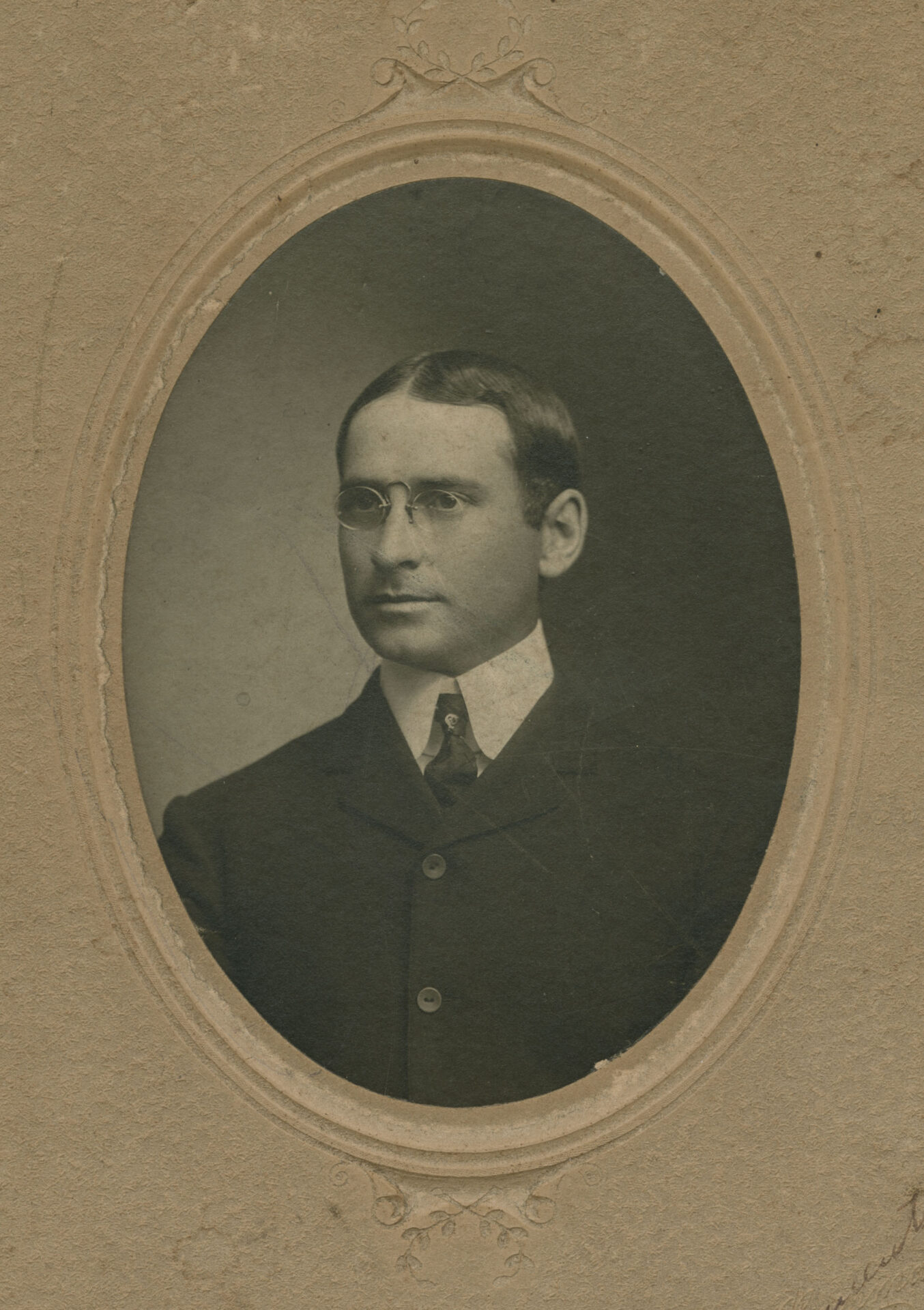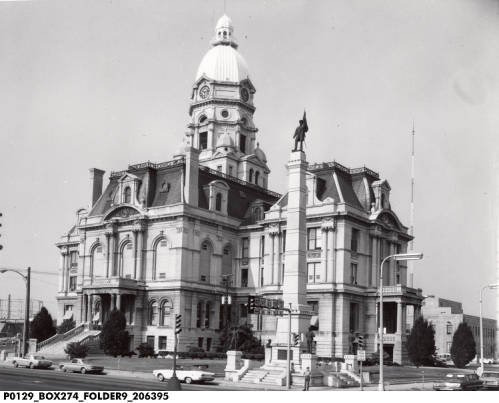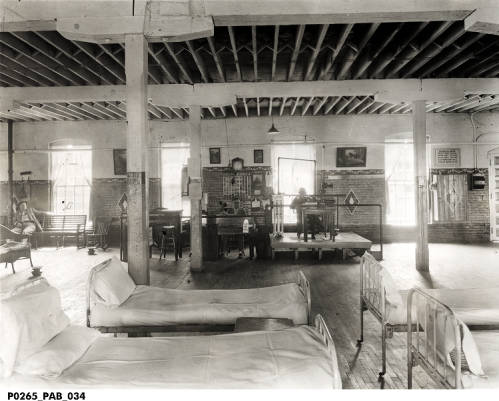
Plan your visit
Pistol Packin’ Pastor: Part 2
November 21, 2023

This is Part 2 of the story of Wilbur Gibbons. To read part 1, click here.
On Wilbur Gibbons’ 1918 draft registration card, he listed himself as a minister. Although he had been ordained in the Presbyterian church under the pretense that he would be working among the Apache in Arizona, he and his family lived in Utica, Illinois. Over the next seven years or so, Gibbons worked as a pastor in some small country churches in the Utica area. In 1925 he resigned from his church in a small place called Heyworth. Then in 1927, he appears back in the Terre Haute city directory, still as a “Reverend.”

Vigo County Courthouse, Terre Haute, Indiana, Martin Collection, Indiana Historical Society.
Nineteen twenty-nine was the year that Rose asked again for a divorce. In her complaint she charged that her husband had made threats to kill her. But at the divorce hearing on July 5, Wilbur maintained that he “would not harm a hair of her head.” Shortly after this testimony, the court adjourned briefly to await the arrival of a witness. Everybody filed out of the courtroom, congregating in the antechamber. Suddenly two shots rang out. People screamed. Wilbur ran down the corridor of the courthouse, tossing his revolver into a corner. An attorney and a deputy sheriff managed to tackle him to the ground before he got out the door, and he was handcuffed and taken to jail. Rose was also helped up and rushed to the hospital.
As he was led away, one newspaper reported that Wilbur expressed confusion at being arrested “just for shooting [his] own wife.” The editorial also questioned the arrest, pointing out that, “Anybody that reads the newspapers knows that a wife, especially a good-looking one, has the inalienable privilege of perforating her husband with a bullet, or several of them, without anything more harmful happening to her than getting a vaudeville or movie contract.” Despite the editorialist’s opinion of a double standard, the 1930 census lists Wilbur Gibbons as an inmate of the Indiana State Prison in Michigan City, working as a seatmaker in the chair shop. This time, he was sentenced to one to 10 years.

This photo, taken in the 1930s, shows the interior of ‘I’ Dorm in the Indiana State Prison. IHS photo.
I could not discern exactly how much time Gibbons served, but by 1933 he was a free man in Terre Haute and remarried. Actually, he remarried a couple of times. He also continued as a pastor off and on for the rest of his life. He died at the age of 85 of a sudden heart attack. At the time of his death, he was separated from his most recent wife, Clara.
Rose survived the attack at the courthouse, being hit once in the shoulder. Her divorce request obviously granted, she remarried too, and lived a long life in Indianapolis with her son and new husband.
Gibbons’ portrait appears in the Rudolf E. Strenss Collection (M1524). And in case you are wondering, I eventually determined that Gibbons must have been an acquaintance of Strenss’ wife Grace Houghland. Grace was a native of Greencastle, where Gibbons attended college. The photo was just a remnant of her past life before meeting her husband and moving to Indianapolis in 1908. Perhaps Gibbons had even pursued her romantically. In that case, she really dodged a bullet.









